to LeasePlan UK Limited (trading as Ayvens)
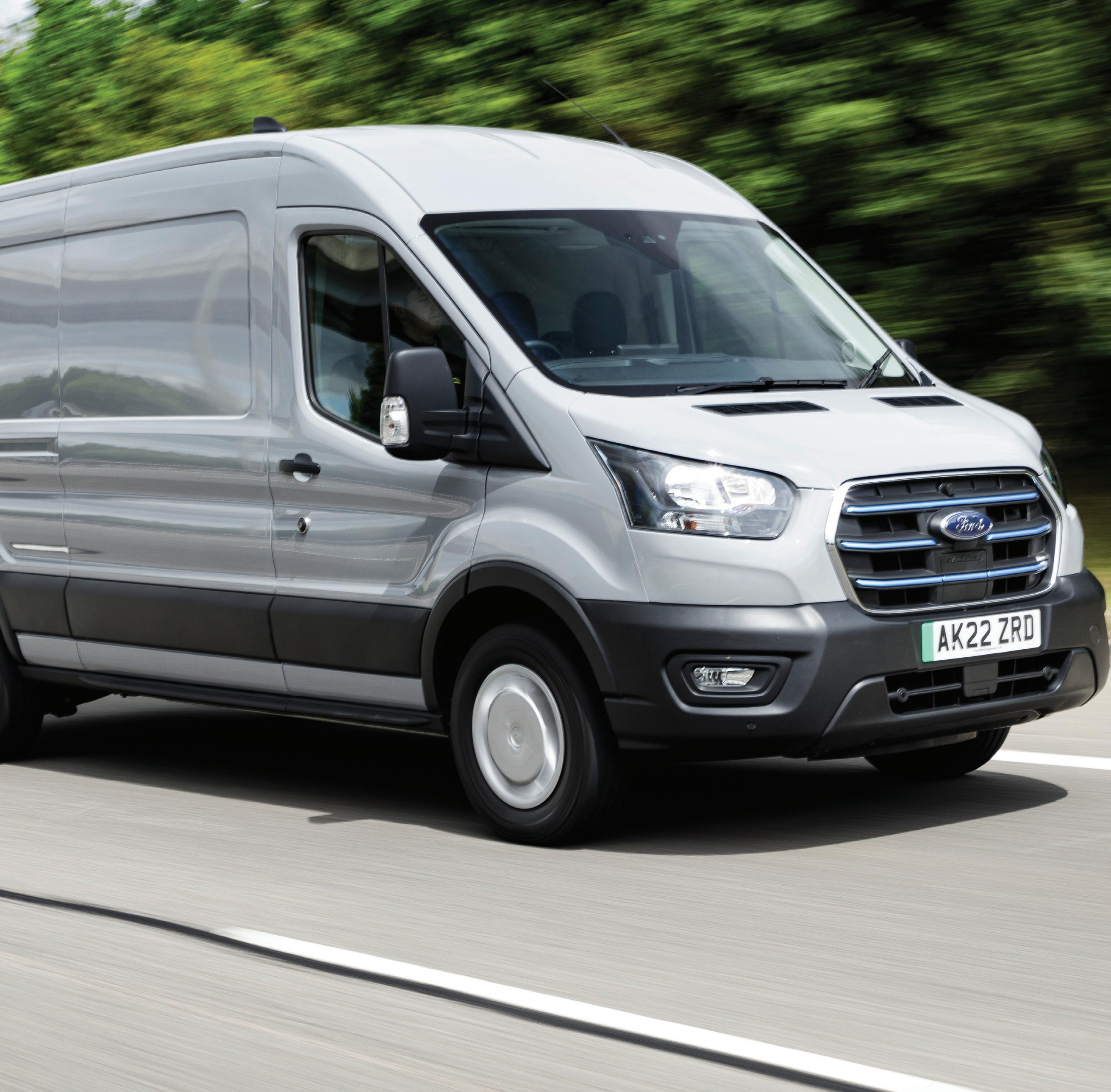
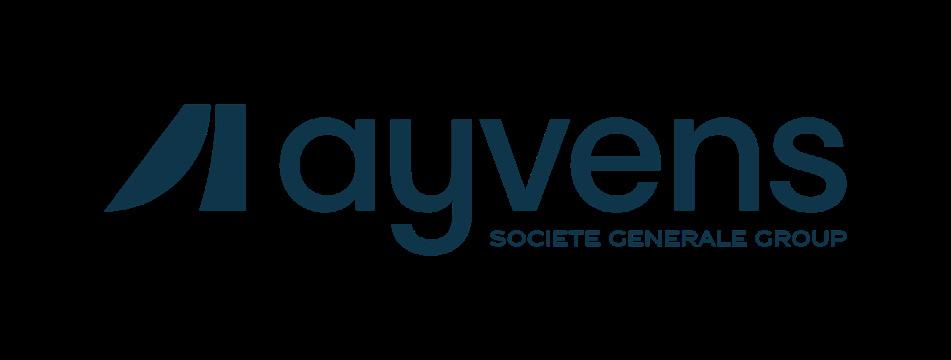

to LeasePlan UK Limited (trading as Ayvens)


The aim of the BVRLA Fair Wear & Tear Guide is to provide:
› information to drivers and fleet operators about looking after a leased or financed vehicle so that end of contract charges can be avoided
› an industry-wide, accepted standard that defines fair wear and tear on light commercial vehicles when they are returned at the end of a lease or finance agreement.
Separate Fair Wear & Tear Guides are available for commercial vehicles over 3.5t and up to 17 seat minibuses, and passenger cars.
Fair wear and tear occurs when normal usage causes acceptable deterioration to a vehicle.
When BVRLA members review deterioration in the vehicle’s condition at the end of a contract or finance agreement, they consider the age, mileage, use of the vehicle and whether it has been looked after sufficiently.
Fair wear and tear should not be confused with damage, which occurs as a result of a specific event or
series of events, such as an impact, inappropriate stowing of items, harsh treatment, negligent acts or omissions.
This Fair Wear & Tear Guide is produced by the British Vehicle Rental & Leasing Association (BVRLA) with the assistance of a specialist working group drawn from BVRLA members, and independent market experts.
What does the BVRLA Fair Wear & Tear Guide contain?
The guide contains information that drivers and operators can use throughout the period of the vehicle contract including:
› tips on looking after the vehicle
› information drivers and fleet operators should know at the start of the lease
› tips on appraising the vehicle’s condition at the end of the lease
› what to expect on the day the vehicle is returned
› how to complain if things go wrong
The BVRLA Fair Wear & Tear Standard is also included. It defines the industry standard at return for every aspect of the vehicle’s condition. For ease of reference, the condition of the vehicle is considered under the following headings:
› General appearance and road safety
› Maintenance, servicing, repairs
› External specialist equipment like tail lifts
› Exterior body, paintwork, cab, air management and in-fill panels, bumpers and trim – these are areas that don’t have heavy wear
– see blue zone
› Body and tipper floors, coach steps, load areas or working areas subject to heavy wear through normal operation
– see yellow zone
› Interior Cab, driver and passenger/crew areas of vehicles
– see magenta zone
› Tyres, wheels
› Windows and glass
What to expect when the vehicle is delivered
The fleet operator or customer named on the contract should be clear at the outset of the lease or finance agreement about their obligations to ensure that the vehicle is appropriately looked after and returned in the required condition.
There needs to be a professional handover by the leasing company or service provider when the vehicle is new. Giving information about vehicle servicing, maintenance, functionality of its features, accessories and fitted equipment will be part of that process. ADAS equipment should be included in the handover because damaged equipment like cameras and radars that are fitted to monitor the road ahead will impair functionality.
Having an effective preventative maintenance system in place will ensure operator compliance and road safety. It will also help to achieve lower fleet operating costs, less downtime and a reduced likelihood of incurring end of lease charges at vehicle return.
Ask the leasing company or service provider for advice on maintaining and operating the vehicle, or information about where such advice can be sourced and provided.
Advice for customers during the term of the vehicle lease
The vehicle, its equipment and accessories must be used, maintained and looked after according to the vehicle manufacturer’s guidelines.
The leasing company or service provider should at the start of the contract:
› supply information on the return standards required by the leasing company. Following this information will keep the vehicle in good condition and minimise any end of contract charges.
› provide an inventory detailing all standard and optional equipment supplied with the vehicle.
Regular vehicle inspections and best practices in fleet management will help prevent damage through harsh treatment and embed a culture of looking after the vehicle and its equipment.
Many of these checks are legal requirements to ensure the vehicle is always safe and roadworthy.
They are also critical in ensuring that excessive wear and tear is identified early and any damage repaired promptly.
The leasing or service provider will do routine servicing and maintenance if the vehicle is on a maintenance-inclusive contract or a fleet-managed arrangement.
Leasing companies and service providers may provide guidance to help customers look after their vehicle if asked to do so.
Advice for customers during the term of the vehicle lease (continued)
(continued)
Customers should:
› use, maintain and look after the vehicle in accordance with the vehicle manufacturer’s guidelines;
› follow the advice provided to keep the vehicle in good condition, help maintain its performance, and preserve its safety features and emissions standards. Looking after the vehicle appropriately will minimise any potential charges at the end of contract;
› adhere to the manufacturer’s recommendations regarding fuel and fuel blends, additives such as Adblue, lubricants and battery recharging because the vehicle’s warranty may be invalidated and long-term damage caused through inappropriate use of fuels, additives, lubricants and battery usage;
› report any suspected manufacturer’s faults identified on any part of the vehicle to its bodywork, trim or equipment to the leasing company or service provider as soon as possible to get the issue resolved;
› liaise with the leasing company or service provider if the anticipated use, operating conditions, environment or geographical location of the vehicle change during the term of the lease or contract;
› liaise with the leasing company or service provider 10-12 weeks before the contract end to ensure any private number plates are transferred from the current vehicle(s) to the new one(s);
› organise the recalibration of any tachograph equipment.
Appraisal tips for customers before returning a lease vehicle
› Carry out an appraisal of the vehicle 10 to 12 weeks before the vehicle is due for return. This will allow you to arrange to have any damage rectified and missing items replaced.
› Before appraising the vehicle, make sure that it has been washed and is thoroughly clean, but remember to allow time for it to dry. Water on the paintwork can mask faults.
› Choose a time and place with good light. This is how the leasing company or service provider will examine the vehicle. Appraisals carried out in poor light invariably miss some faults.
› Check the terms of your contract for information on the return standard required and consult with the leasing company or service provider if you are in any doubt.
› Walk all the way around the vehicle and examine closely each panel, including the roof, bonnet, doors and body, for significant damage. Observe where the light is reflected differently from any dents and scratches.
› Carefully examine the front and rear of the vehicle and look along each side. This will help you see scratches and dents that may otherwise be difficult to spot.
› Inspect lamps, lenses, windows and mirrors for chips, cracks and holes.
› Check the tyres for damage. Check that the wear on the tread across each tyre is even.
› Inspect wheels, wheel rims and wheel hubs for rust and corrosion.
› Clean and valet the cab, interior passenger, crew and load areas.
› Check upholstered areas for odours, tears, burns, stains and wear.
› Inspect all in-cab and external equipment controls – including audio equipment and accessories. They should be present and fully functional.
› Check the vehicle against the BVRLA Fair Wear & Tear Standard.
› Arrange to repair areas of damage and replace missing equipment and accessories before the vehicle is returned, ensuring that any work carried out is done to a professional standard by reputable repairers using OEM or OEM equivalent parts.
› Major repairs will require the approval of the leasing company or service provider before the work is carried out.
Customers can expect to be treated fairly throughout the vehicle return process. They will be informed in advance about what to expect when returning the vehicle. Some leasing companies and service providers conduct a full inspection and provide a condition report upon collection from the customer’s premises. Others may collect the vehicle, document its condition by noting visible damage and missing equipment, and perform a final inspection later at a designated site.
It is recommended that the customer, fleet operator, or a knowledgeable representative be present during the inspection at the time of return.
If the vehicle is not sufficiently clean to allow a thorough inspection, the collection may be delayed, and a charge may apply. In such cases, customers will be asked to agree to postpone the inspection and sign the condition report to acknowledge this.
The vehicle should be returned in a safe, legal, and mechanically reliable condition, capable of passing an MOT test.
The vehicle’s engine and brake management systems should not display any warning lights
(e.g., diesel particulate filter (DPF), tyre pressure monitoring system (TPS), or oil pressure). If a warning light is illuminated, the vehicle may be deemed undriveable, and the collection process may be cancelled, in which case a fee could be charged.
Advisory warning lights, such as a countdown to the vehicle’s next service, are acceptable.
If the BVRLA member intends to apply any charges, such as those for excess mileage, damage, or missing equipment, the customer must be notified of these charges within four weeks of the vehicle being collected or returned. Alternatively, the customer may be informed at the time of collection or return.
If charges are applied, the BVRLA member should provide a detailed breakdown of the charges, including the method and type of repair.
Customers should also be provided with photographic/ video or other documentary evidence to help justify or support the charges made.
Customers must also be advised of their right to query any end of lease charges and how this can be done.
End of lease charges (continued)
End of lease charges are applied when the vehicle, its equipment and accessories are not used, maintained or looked after as originally agreed at the start of the lease or contract. These charges compensate the leasing company for the cost of rectifying damage and replacing missing items.
Customers can expect to incur end of lease charges if there is no evidence that the vehicle has been serviced and maintained.
Charges can still be applied at end of lease in cases where the leasing company or service provider decides for commercial reasons not to repair damage or to replace missing equipment before the vehicle is sold.
Customers are not charged at end of lease for any refurbishment that arises from normal wear and tear.
Customers can arrange to repair any damage outside the agreed return standard before returning the vehicle, provided the repairs are carried out to a professional standard by a reputable repairer who can provide a full transferable warranty on their work.
Major repairs will need prior approval from the leasing company or service provider.
On entering the lease agreement, BVRLA members must clearly explain:
› their end of lease vehicle return standard;
› the required condition of the vehicle at end of the lease or contract;
› the presence and condition of any vehicle keys, fitted equipment and accessories (inventory);
› how they require you to look after the vehicle (e.g. servicing and maintenance) during the term of the contract.
BVRLA members are obliged under the BVRLA Code of Conduct to trade fairly and responsibly in all dealings with their customers. The BVRLA promotes ethical trading, clear pricing, transparent terms and conditions and the provision of high-quality vehicles and customer service. The Code of Conduct sets out the standards that BVRLA members must comply with regarding pre- and post- contract procedures, level of customer support during the contract period, and how customer complaints should be handled.
In the event of a dispute about the condition or damage to the vehicle, customers have the right to pay for a review of the documents and photographic evidence by an independent qualified engineer, e.g. an engineer who is unrelated to the original inspection and agreed by both parties.
The engineer’s decision will be binding on both the customer and the BVRLA member.
If the engineer finds in the customer’s favour, the BVRLA member will refund the reasonable cost of the examination.
BVRLA dispute resolution process
Those who are unhappy with the service received from a leasing company should in the first instance inform the company of the issue to give them a chance to resolve the matter. Contact them in writing, explaining the issue and how you would like them to put things right.
If an issue remains unresolved and the leasing company’s final response is deemed unsatisfactory, the customer can escalate the complaint to the BVRLA Alternative Dispute Resolution (ADR) service, provided the leasing company is a BVRLA member.
The BVRLA is approved by Government as a Consumer ADR body under the Alternative Dispute Resolution for Consumer Disputes (Competent Authorities and Information) Regulations 2015.
Customers of BVRLA members have access to the ADR at no cost. The ADR is a restorative justice service, not a compensatory scheme.
The case is reviewed, based on the evidence supplied by both parties. A decision and explanation of findings are supplied in writing.
The BVRLA aims to resolve all complaints within 30 days of receipt.
BVRLA members are obliged under the BVRLA Code of Conduct to comply with the ADR service’s findings.
To raise a complaint and get further information on the service visit our website:
https://www.bvrla.co.uk/consumer-advice/making-acomplaint-adr.html
General appearance and road safety
Vehicles should be legally compliant, roadworthy with no warning lights illuminated, and free of any damage.
All electronic safety features and advanced driver assistance systems that help the driver, e.g. parking sensors, cruise controls, lane departure and collision warnings, must be in working order.
There must be sufficient fuel (fuel warning light must not be illuminated) or full charge in the battery, if an electric vehicle, to bring about the vehicle collection or return.
The vehicle’s exterior should be sufficiently clean to allow a detailed inspection. The interior should be clean. The vehicle, including bodywork and any fittings should be free of damage subject to the fair wear and tear tolerances explained on pages 18 to 24.
› The vehicle and its auxiliary equipment should have been maintained in line with the manufacturer’s guidelines.
› The vehicle and fitted equipment should be returned in a safe, legal and reliable mechanical condition and capable of passing the relevant statutory test (MOT, LOLER etc.)
› The vehicle should have been maintained in line with the manufacturer’s recommendations regarding fuel and fuel blends, additives such as AdBlue, lubricants and battery recharging (if an electric or hybrid vehicle), because the vehicle’s warranty may be invalidated, and long-term damage caused, through inappropriate use of fuels, additives, lubricants and battery usage.
› The period remaining on the vehicle’s relevant test certificate, as well as that of any fitted equipment, at end of lease may be stipulated in the lease or service contract.
› If the service and maintenance records are kept electronically, the customer must produce evidence that the vehicle has been serviced and maintained according to the vehicle manufacturer’s service and maintenance schedule.
Maintenance, servicing and repairs (continued)
› Appropriate evidence would include hard copies of the service record or invoice clearly showing the date, vehicle mileage reading and the repairer/ service agent’s stamp. Customers should remove any sensitive personal information from such documents and ensure they are with the vehicle at the point of collection otherwise charges may be incurred.
› Unauthorised odometer changes are not acceptable.
› Any odometer malfunctions must have been reported to the leasing company/service provider. The driver fully warrants that the mileage reading at the time the vehicle was collected is correct.
› Any minor repairs should have been carried out to a professional standard by reputable repairers using OEM or OEM equivalent parts.
› All major repairs will have required the approval of the leasing company/ service provider prior to the work being carried out and evidence and warranty from the repairer must be produced.
All vehicle and auxiliary equipment documentation that is legislated, including the vehicle’s registration documents, MOT certificates, service records, inspection reports, lifting, and tachograph calibration certificates must be valid and available.
The period remaining on the test certificate or auxiliary equipment test certificate at vehicle return may be stipulated in the lease or contract.
The vehicle driveline should be free from defects.
plates)
A full set of keys, including the spares and locking wheel-nut keys, should be returned if originally supplied.
If a tail lift is fitted, the key(s) should be returned if originally supplied.
All keys must be in fully working order and free of damage.
Registration plates (number plates) must be present and free of damage.
Batteries must be suitable for the vehicle and its safe, efficient operation. They must be capable of starting the engine from cold without an external charge.
If originally supplied, both fast and slow charging leads must be present.
Damage to electric vehicle battery charging leads, plugs and sockets is not acceptable.
ADAS, in-cab cameras etc.
All original equipment, controls, auxiliary equipment and any nonstandard equipment in the cab area, must be present and fully functional.
The vehicle’s ADAS (automated driver assistance systems) must have been recalibrated according to the vehicle manufacturer’s recommendations if any component part, e.g. glass or windscreen(s) has been replaced.
Light commercial vehicles (LCVs) are working vehicles and their condition at end of lease or contract must allow for wear and tear, appropriate to their operation and use.
The BVRLA Fair Wear & Tear Standard describes the condition of the vehicle in colour-coded zones, or areas, as detailed in the following pages.
Blue Zone:
Exterior paintwork, cab, air management and in-fill panels, body, bumpers and trim – areas not subject to heavy wear nor in contact with the payload.
Yellow Zone:
Steps, areas close to the road surface (e.g. wheel arches) or in the contact with the payload (e.g. body floors, tipper load areas), rear- and sideguards, tail boards, kick panels, dropsides, driver and passenger access steps – areas subject to heavy wear.
Magenta Zone:
Interior cab, crew and passenger areas.
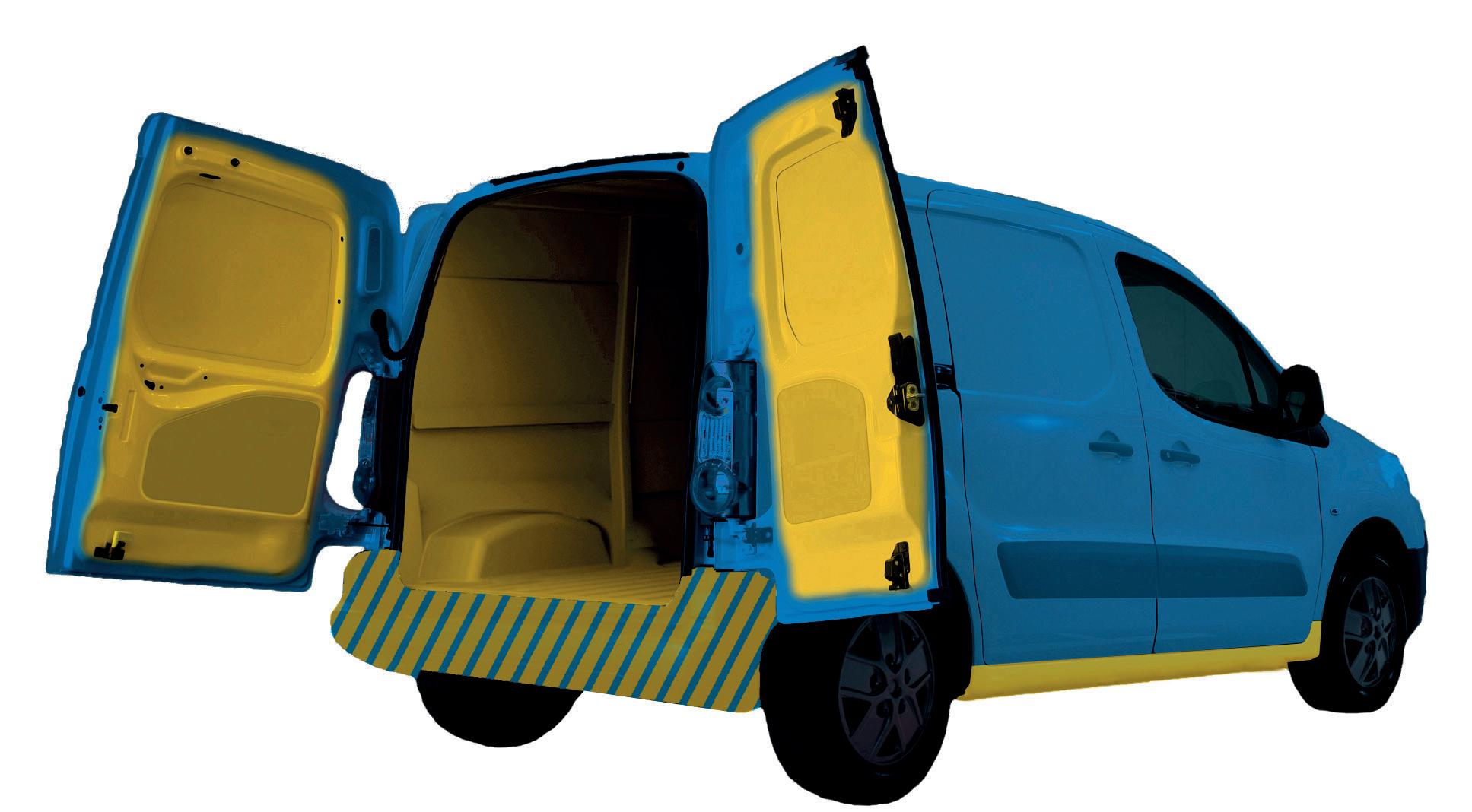
Small panel vans and car-derived vans (CDVs)
The rear step will be in the Blue Zone unless it forms part of the loading area (Yellow Zone)
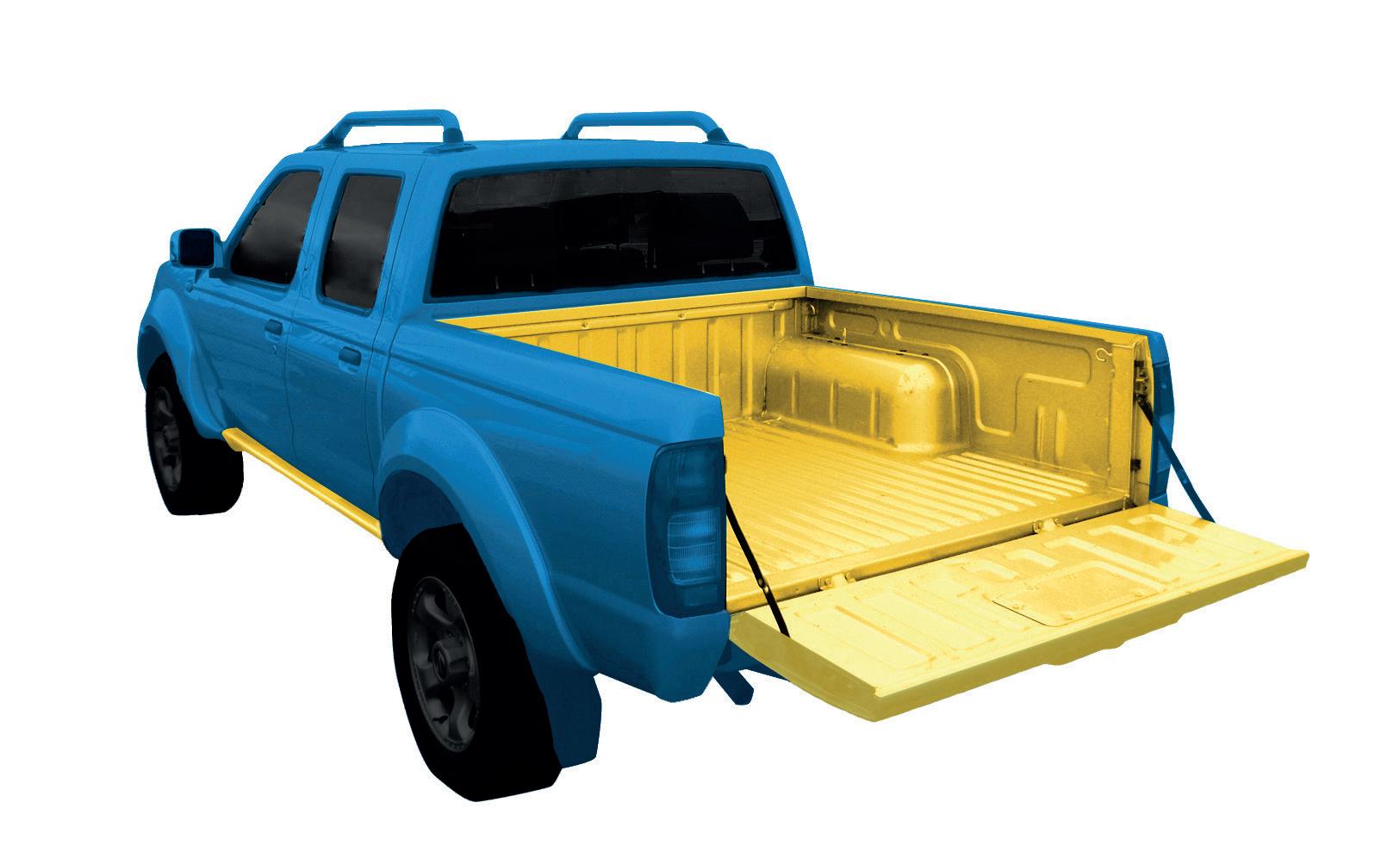
Manufacturer-built pick-up

Coach-built (body separate from cab), drop-sides, tippers, flat-beds and beaver tails


Specialist bodywork and conversions
CDVs and panel vans
The rear step will be in the Blue Zone unless it forms part of the loading area (Yellow Zone)
Luton with tail lift
Note: both the upper and lower surfaces of the tail lift platform are yellow zone.
There are many body types with specialist working applications. It is recommended that the leasing company/service provider agrees with the customer at the outset of the lease or contract those areas which are to be designated a blue zone (not a working surface) and a yellow zone (a working surface).
Applies to exterior paintwork
– cab, rigid body panels, air management and in-fill panels, painted bumpers, body mouldings and mirrors.
chips,dents, scratches and scuffs
There should be no rust, corrosion or discolouration on any painted area. There should be no cracking or deviation from the original shape or position of any panel or component. Chips, scratches and dents within the tolerance levels on this page are acceptable.
Repaired chips, scratches and dents outside the fair wear and tear tolerance are acceptable provided the work is completed to a professional standard by repairers who can provide full warranty on their work. Obvious evidence of poor repair such as flaking paint, preparation marks, paint contamination, rippled finish and ill-matched paint is not acceptable.




Customers should refer to the inventory of additional equipment and tools supplied with the vehicle by the leasing company/service provider at start of contract.
50mm scuff
Chips of 8mm and less in diameter are acceptable provided the base metal or material is not exposed or rusted.
Maximum of four chips on any panel, six chips per door edge, and eight chips on any forward-facing panel.
Dents of 15mm or less in diameter are acceptable provided the base metal or material is not exposed or rusted.
Scratches and abrasions of 50mm or less are acceptable provided the base metal or material is not exposed or rusted.
Scuffs and scratches of 50mm or less are acceptable provided the moulding or trim is not broken, cracked or deformed.
Damage caused by fitting or removing badges, emblems, labels, logos, wraps or livery, is not acceptable. The vehicle must be returned to a condition agreed by the leasing company/service provider.
Light shadowing due to paint fade is acceptable.
Badges or emblems originally supplied on the vehicle, should be on the vehicle when returned.
All staps and tensioners should be present and operate correctly.
Load-retaining brackets and straps if originally supplied should be complete and fully functioning.
Curtains and pelmets should be free of un-repaired holes and other damage.
› Curtains must run freely and be of tidy appearance.
› Curtain tracks must be undamaged and rust-free.
› Damaged pelmets should be repaired or replaced.
› Repairs to curtains should be to a professional standard and cosmetically tidy.
› Curtains must be replaced when the number and siting of any patched repairs interfere with their smooth running and operation.
A curtain with a repaired split of 2m or more is not acceptable
Note: If originally supplied, load-bearing curtains (for example, standard EN12642XL) cannot be repaired and must be replaced.
All temperature-controlled bodies must operate satisfactorily and have current statutory certificates in place. Any refrigeration motor or on-body/vehicle mounted unit fitted to the vehicle should be returned with the full set of motor covers in place and secured appropriately.
The interior of box bodies and temperature-controlled vehicles should be clean and free of any load or residue contamination.
There should be no damage to the roof or side panels through insulating water contamination. The refrigerator motor should operate correctly, as should any temperature control or monitoring device.
Roof and side panels must not be distorted or deformed.
Evidence of wear through absence of paint within the tolerance levels on page 18 is acceptable.
Chips, scratches and dents within the tolerance levels on page 18 are acceptable.
Any load-restraining devices, brackets and straps should be present, free of damage and fully functioning.
The vehicle’s exterior bodywork and any fittings should be free of damage subject to the fair wear and tear tolerances explained on page 18 i.e. the blue zone tolerances.
All specialised bodywork on vehicles must operate satisfactorily and have current statutory testing and inspection certificates in place.
Wings must be complete and free of holes.
Spray suppression flaps should comply with legal requirements.
Fuel and Adblue tanks should be uncontaminated, securely attached to the vehicle and free of leaks and damage. Warning lights should not be illuminated.
Components should be free of oil, fuel or coolant leaks. Any seepage around seals or gaskets that leaves a surface residue is not considered to be a leak and is acceptable. Warning lights should not be illuminated.
All fitted electrical equipment, including tachographs, reversing cameras, adaptive speed controls, speed limiters and lamps (both obligatory and discretionary), should be present and fully functional. Any replacements must be of similar standard and specification to that originally supplied.
Any impact damage to the vehicle’s undercarriage is not acceptable.
Catalytic converters and other vehicle emission traps must be intact and fully functioning.
Additional equipment, components and panels should be present and fully functional.
Tools such as jacks and cab tilt bars must be present if originally supplied. Any replacements must be fitted with the permission of the leasing company/service provider and be of a similar standard and specification.
For a list of fitted equipment and tools, customers should refer to the inventory of additional equipment and tools supplied with the vehicle by the leasing company/ service provider at start of contract.
Body and tipper floors, driver and passenger steps, load areas or working areas subject to heavy wear through normal operation.
Surface rust is acceptable on these areas of heavy wear, but the corrosion must not compromise the integrity of any panel or component.
Chips and scratches within the tolerance levels on page 18 are acceptable.
Damage caused to interior door linings, bulkheads and interior wheel arches is not acceptable.
There must be no distortion to any panel or deformation to the original shape of the component. Chips, scratches and dents within the tolerance levels on page 18 are acceptable.
Vehicle bodies should be free of load residue contamination.
Bodies used for the carriage of corrosive and other potentially harmful materials must have been subject to increased maintenance procedures.
Damage and contamination caused to the load area must be made good.
Drop-sides, tippers and platform bodies
Any significant distortion to bodies due to collision or load impact is not acceptable. Any damage that prevents the correct operation and security of the drop-sides or tail-board is unacceptable.
Drop-sided vehicles, tippers and platform-bodied vehicles must be free of holes and gaps from where the load could escape.
Scratches to the paintwork on shutters and doors, within the tolerance levels on page 18, are acceptable when caused through normal usage.
Shutters and doors should be secure, correctly aligned, able to open without undue force and free from structural damage, holes, gouges, and cracks.
Cranes, tail lifts and other auxiliary equipment must be in a working condition and have current, valid statutory certificates available.
There must be no distortion to the equipment or deformation to the original shape of the component.
Surface rust is acceptable, but the corrosion must not compromise the integrity of any component.
Absence of paint through wear is acceptable but the base material should not be visible.
Absence of paint through wear is acceptable but the base material should not be visible.
Roof racks and ladders may only be fitted with the approval of the leasing company/service provider.
They must be fit for purpose and meet the vehicle manufacturer’s recommended design and load specification.
They must be fitted correctly, with anti-rust mounting clamps and pads.
Any holes drilled for fitting purposes must be treated against water penetration and rust.
There must be no distortion to the roof, panels or gutter rail.
Tow bars must only be fitted with approval from the leasing company/service provider.
If fitted, a tow bar must be in good, rust-free condition, with electrical connections that work properly.
If fitted, high-security locks must be functional, and the keys present.
Upholstery, seats, seat belts, fascia, headlining, arm-rests, interior trim and other fittings
The upholstery, seats and interior fittings must be clean and odourless with no burns, scratches, holes or gouges, rips, tears, cracking, staining, or evidence of smoking. Replacements must match the original specification. Customers should refer to the inventory of additional equipment and tools supplied with the vehicle by the leasing company/service provider at start of contract.
Floor coverings and surrounding trims should not be torn or split. Carpets should not have holes. Foot wells should not have holes that penetrate the base metal or material, such as rubber flooring. Repaired floor coverings and trim are acceptable if they have been carried out to a professional standard by reputable repairers using OEM or OEM equivalent parts.
– driver and passenger areas
Interior fixtures and fittings such as seat belts, rear view mirrors, courtesy lights, sun visors, door bins, etc, must be present, intact and free of damage. Air vents must be free of damage and in full working order.
All original equipment, accessories and controls, including driver instrument display must be present, fully operational and free of damage. Any items or equipment fitted or wired-in or mounted on the dashboard should be removed professionally before returning the vehicle and the surface made good. Any holes and other damage must be repaired unless otherwise agreed in writing with the leasing company/service provider.
All accessories, including items such as first aid kits and fire extinguishers, must be returned intact or replaced with items of a similar standard and specification.
Tyres and spares must be legal in all respects and be of the correct type, size and load bearing capacity to comply with the vehicle manufacturer’s recommendations.
The minimum tread depth required will be specified in the lease or contract and this depth must be present across the full width of the tread and around the entire circumference.
There must be no damage to sidewalls or tread, or any cracking.
Evidence of uneven wear due to under or over-inflation or incorrect steering geometry is not acceptable. The following are typical examples of what happens to tyres if the above has occurred:
› Over-inflation = centre of tyre excessively worn
› Under-inflation = both outer edges of tyre unevenly worn
› Incorrect steering geometry = the inner or the outer edge of the tyre unevenly worn.
Wheels and wheel covers Dents on wheel rims are not acceptable. Wheel trims must be present.
Scuffs up to 50mm on the total circumference of the wheel rim and on alloy wheels are acceptable.
Any damage to the wheel spokes, wheel fascia, or hub of the alloy wheel is not acceptable. There should be no rust or corrosion on the alloy wheels.
The spare wheel, including ‘spacesaver’ jack and other tools, must be intact, stowed properly and in good working order.
The emergency tyre inflation kit, if supplied when new, should be in full working order, serviceable and ready for use.
A canister that has been partially or fully discharged should be replaced.
Windscreens and glass
All glass areas must be secure, watertight and fully operational.
Damage in excess of 10mm in the driver’s line of vision (a vertical strip 290mm wide centred on the steering wheel), or in excess of 40mm elsewhere in the area swept by the vehicle’s wiper blades, is not acceptable.
(See diagram on page 27)
In all areas, light scratching is acceptable provided it does not interfere with the driver’s line of sight and the heating elements and the ADAS (automated driver assistance systems) still work properly.
The vehicle’s ADAS (automated driver assistance systems) must have been recalibrated according to the vehicle manufacturer’s recommendations if any component part, including windscreen(s) has been replaced.
Repaired chips are acceptable provided they are repaired to a professional standard and the work is warrantied.
Windscreen wipers must be present, secure and in good condition so that they can clear the windscreen and give the driver a clear view of the road ahead.
The washer reservoir must have sufficient liquid to clear the windscreen when working in conjunction with the windscreen wiper blades.
Mirrors (glass) must be present and not faded, cracked or damaged.
The housing unit should not be damaged or cracked. All mirrors (including housing units) must be in a working condition.
If adjustable and/or heated door mirrors, they must work correctly.
Windscreens and glass (continued)
All lamps, reflectors and beacon lights must be as originally fitted, secure and fully operational.
Holes, gouges or cracks in the glass or plastic covers of the lamp units are not acceptable. Minor scuff marks or scratches of 25mm or less are acceptable.
Any after-market fitted lamp, reflector, light or beacon should be removed and the surface made good unless the leasing company/service provider has agreed in writing before the vehicle is returned that they can remain in situ.







Any holes and other damage must be repaired unless otherwise agreed in writing with the leasing company/ service provider.
Where fitted, the vehicle’s ADAS (automated driver assistance systems) must have been recalibrated following the replacement of a lamp or lamp unit.






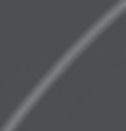


























































Damage in excess of 10mm in the driver’s line of vision (a vertical strip 290mm wide centred on the steering wheel) or in excess of 40mm elsewhere in the area swept by the vehicle’s wiper blades are NOT ACCEPTABLE.





































Abrasion
Multiple marks or scores penetrating the base material, sometimes caused by impact with tree branches.
ADR
Alternative Dispute Resolution. The BVRLA’s service is approved under the Alternative Dispute Resolution for Consumer Disputes (Competent Authorities and Information) Regulations 2015. It accepts complaints from consumers and businesses.
Adblue
Brand name for the non-toxic solution which helps reduce nitrous oxide emissions produced by diesel engines
Chip
Removal of the surface material (glass or paintwork) in a concise area.
Code of Conduct
BVRLA rental and leasing members adhere to a mandatory
Code of Conduct.
This provides customers with the reassurance that the company they are dealing with is committed to delivering the highest industry standards of professionalism and best practice. Full details can be found on the BVRLA website.
Dent
Deformation of the surface structure, usually caused by impact damage.
OEM
Original Equipment Manufacturer.
Scratch
A mark or score with raised edges in the surface material glass or paintwork.
Scuff
Light scraping of top surface not penetrating base material.
Warranty
A written promise to repair or replace a component or to do a piece of work again if it is not satisfactory.
The BVRLA represents over 1,000 companies engaged in vehicle rental, leasing and fleet management. Our membership is responsible for a combined fleet of over 4.3 million cars, vans and trucks – one-in-ten of all vehicles on UK roads.
BVRLA members represent the demand-side of the automotive industry, buying around 50% of new vehicles, including over 80% of those manufactured and sold in the UK. In doing so, they support almost 500,000 jobs, add £7.6bn in tax revenues and contribute £49bn to the UK economy each year.
Together with our members, the association works with policymakers, public sector agencies, regulators, and other key stakeholders to ensure that road transport delivers environmental, social and economic benefits to everyone. BVRLA members are leading the charge to decarbonise road transport.
BVRLA membership provides customers with the reassurance that the company they are dealing with adheres to the highest standards of professionalism and fairness.
The association achieves this by reinforcing industry standards and regulatory compliance via its mandatory Codes of Conduct, inspection regime, governmentapproved Alternative Dispute Resolution service and an extensive range of learning and development programmes.
Our Vision, Mission and Purpose statements communicate to members the long-term goal the BVRLA is working towards and highlight its role in the industry.
Vision
To see Government and Industry united in delivering zero-emission road transport that provides environmental, social and economic benefits to everyone.
Mission
To inform, inspire and influence the automotive community in meeting the road transport needs of society.
Purpose
To be an indispensable resource and champion for the road transport community.
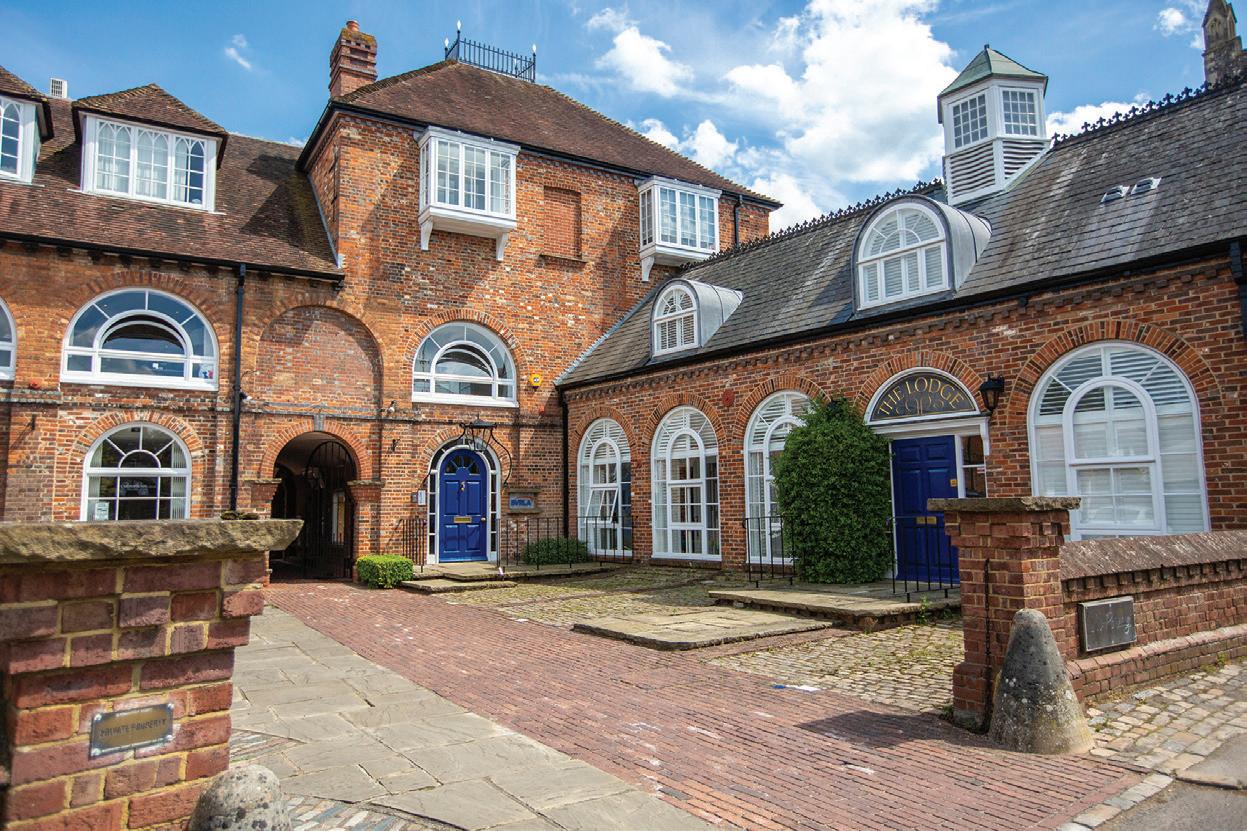
Bri sh Vehicle Rental & Leasing Associa on
River Lodge Badminton Cour t Amersham Buckinghamshire HP7 0DD
Tel 01494 434747 Email info@bvrla.co.uk
ww w.bvrla.co.uk
© COPYRIGH T 2025